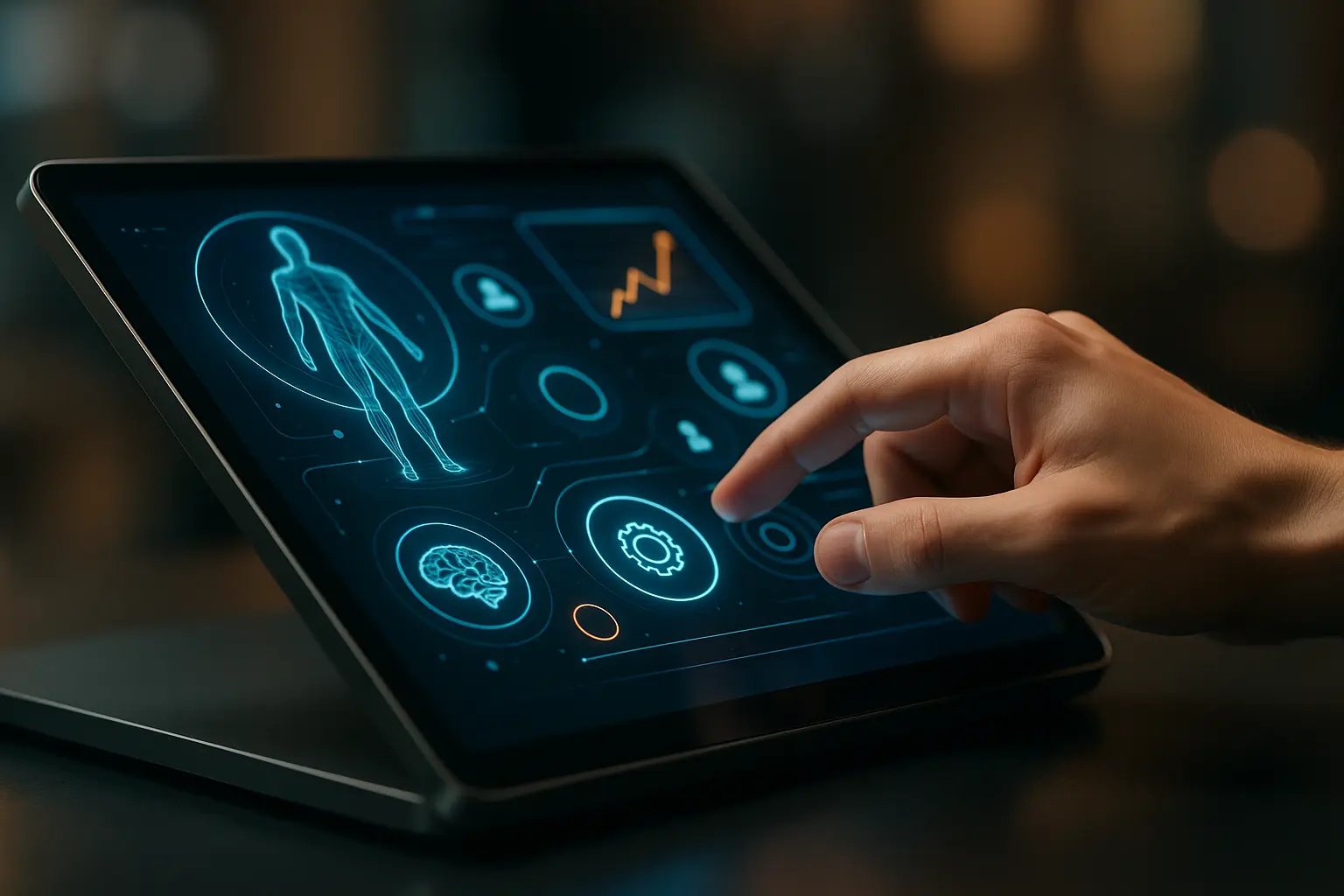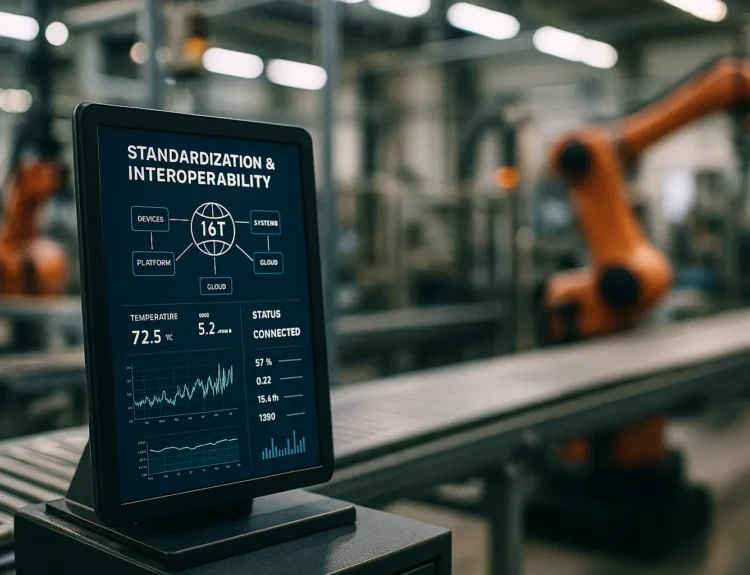In our fast-paced digital landscape, Human-Machine Interfaces (HMIs) are becoming indispensable across various sectors, from industrial manufacturing to home automation. As we navigate this rapidly evolving world, understanding the nuances of HMIs is crucial, not just for tech enthusiasts but for everyone. With the power to enhance performance and streamline operations, these interfaces are the bridge between humans and machines that shape our daily experiences. Let’s delve into the technologies and systems that make HMIs integral to modern life.
Defining Human-Machine Interfaces
Human-Machine Interfaces, often abbreviated as HMIs, are the focal point where users and machines converge. These interfaces come in various forms and cater to different needs, yet they share a common goal: facilitating seamless interaction.
HMIs have evolved significantly over the years. Traditionally, they were simple control panels with buttons and lights. Today, they have transformed into sophisticated touchscreens, voice-activated systems, and even VR interfaces. This evolution underscores the integration of new technologies and the drive towards more intuitive user experiences.
In the industrial sector, HMIs are pivotal. They enable operators to monitor and control complex machinery, ensuring efficient and safe operations. The feedback provided by these interfaces is crucial, helping users make informed decisions in real-time. It’s this real-time data that enables operators to maintain optimal performance across systems.
Outside the industrial realm, we encounter HMIs daily—smartphone interfaces, car dashboards, and home automation systems all belong to this category. Each of these systems is designed with the user in mind, focusing on ease of use and accessibility.
Ultimately, HMIs are not just about the technological aspects; they are about enhancing the human experience by making interactions more fluid and meaningful.
Types of Human-Machine Interfaces
HMIs are not a one-size-fits-all solution. They come in different shapes and sizes, each tailored to specific applications and users. Let’s explore the primary types of HMIs and their unique characteristics.
-
Touchscreen Interfaces: Often found in smartphones, tablets, and industrial panels, touchscreens allow for direct interaction with the system. Their intuitive nature makes them a popular choice for both consumer and industrial applications.
-
Graphical User Interfaces (GUIs): These interfaces use graphical elements like icons and buttons, providing users with a more visual and engaging experience. GUIs are prevalent in computer operating systems and specialized software applications.
-
Voice-Controlled Interfaces: Thanks to advancements in voice recognition technology, voice-controlled HMIs are becoming increasingly common. They offer hands-free operation, which is incredibly useful in environments where physical interaction is not feasible.
-
Augmented and Virtual Reality Interfaces: These cutting-edge technologies provide immersive experiences, allowing users to interact with 3D environments. In fields like manufacturing and design, they offer unparalleled insights into complex systems.
Each interface serves a distinct purpose but shares the commonality of improving user interaction with machines. As we continue to innovate, the line between human and machine blurs, leading to more immersive and efficient experiences.
Impact of HMIs on Industrial Performance
In the realm of industrial applications, HMIs play a pivotal role in enhancing system performance and ensuring operational efficiency. By serving as the bridge between complex machinery and human operators, these interfaces provide critical data that drive decision-making processes.
Real-Time Monitoring: One of the standout features of industrial HMIs is their ability to provide real-time monitoring. Operators can track machine status, detect anomalies, and receive immediate feedback. This real-time insight is crucial for preventing downtime and optimizing system performance.
Ease of Control: HMIs offer simplified control mechanisms for industrial devices and systems. By providing an intuitive interface, they reduce the learning curve for operators, leading to fewer errors and increased productivity. This ease of control translates to smoother operations and a safer working environment.
Integration with Other Systems: Modern HMIs are designed to integrate seamlessly with other industrial technologies. They can connect with PLCs, SCADA systems, and other control units, creating a comprehensive network that ensures all aspects of the manufacturing process are synchronized.
The bottom line is that HMIs empower industries to achieve higher efficiency, safety, and productivity. By leveraging advanced interfaces, companies can stay competitive in today’s fast-paced market.
The Future of Human-Machine Interfaces
As we look towards the future, the evolution of HMIs is set to accelerate, driven by continuous advancements in technology and user expectations. The trajectory of HMIs is not just about making interfaces more advanced, but also more human-centered.
Artificial Intelligence and Machine Learning: The incorporation of AI and machine learning into HMIs is revolutionizing the way we interact with machines. These technologies enable systems to learn from user behavior, providing more personalized and predictive experiences.
Wearable Interfaces: With the rise of wearable technology, HMIs are becoming more embedded in our daily lives. From smartwatches to AR glasses, these devices offer new ways of interacting with both the digital and physical world.
Sustainability and Energy Efficiency: The future of HMIs also lies in creating more sustainable and energy-efficient systems. As environmental concerns grow, the development of interfaces that consume less energy and reduce waste becomes imperative.
Enhanced Connectivity: In the age of the Internet of Things (IoT), connectivity is crucial. Future HMIs will likely integrate more seamlessly with IoT devices, providing users with a cohesive and interconnected experience.
The future of HMIs is bright, filled with opportunities for innovation and improvement. As we continue to push boundaries, these interfaces will undoubtedly become even more integral to our everyday lives.
In the ever-evolving landscape of technology, Human-Machine Interfaces stand out as a critical component in bridging the gap between users and machines. From industrial settings to our everyday lives, these interfaces enhance interactions, improve performance, and simplify complex systems.
As we move forward, understanding and embracing these technologies is essential. By doing so, we can harness their full potential, leading to more intuitive, efficient, and sustainable interactions with the machines that shape our world. The journey of HMIs is far from over, and as we continue to innovate, the possibilities are endless. Let’s embrace this exciting future together.
FAQ
What is a Human-Machine Interface (HMI)?
A Human-Machine Interface (HMI) is a platform that enables interaction between humans and machines. It allows users to control and monitor machinery or systems through a user-friendly interface, often using screens, buttons, and other input devices.
How do Human-Machine Interfaces benefit industrial settings?
In industrial environments, HMIs streamline the operation process by providing real-time data, facilitating quick decision-making, and enhancing productivity. They allow operators to efficiently monitor and control machines, reducing downtime and improving overall safety.
What are the key components of an effective HMI system?
An effective HMI system typically comprises a user interface, input devices (like touchscreens or keyboards), output displays (such as monitors or LED indicators), and software that processes and interprets user commands to interact with the machine.
How has the evolution of technology impacted the design of HMIs?
Advancements in technology have significantly transformed HMIs, making them more intuitive, responsive, and accessible. Modern HMIs incorporate touchscreens, voice commands, and even augmented reality, enabling more seamless and immersive user interactions.
What are the challenges faced in designing user-friendly HMIs?
Designing HMIs involves overcoming challenges such as ensuring intuitive navigation, accommodating diverse user needs and abilities, minimizing cognitive load, and integrating with existing systems. Balancing functionality with simplicity is crucial to enhancing user experience.



